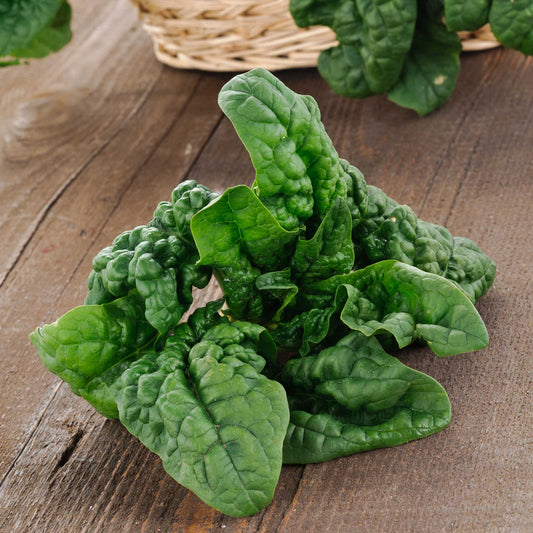-
main-collection-product-grid

Spinach Seeds - Bloomsdale Long Standing
Slow to bolt variety of meaty, dark green leavesSpinach Seeds - Bloomsdale Long Standing
Slow to bolt variety of meaty, dark green leavesRegular price As Low As $4.99Regular priceUnit price per -
main-collection-product-grid

Spinach Seeds - Noble Giant
Retains flavor cooked, canned or eaten freshSpinach Seeds - Noble Giant
Retains flavor cooked, canned or eaten freshRegular price As Low As $4.99Regular priceUnit price per -
main-collection-product-grid

Spinach Seeds (Organic) - Bloomsdale Long Standing
Rich flavor, highly nutritiousSpinach Seeds (Organic) - Bloomsdale Long Standing
Rich flavor, highly nutritiousRegular price As Low As $6.99Regular priceUnit price per -
main-collection-product-grid

Spinach Seeds - Viroflay
Heirloom variety with large 10-inch leavesSpinach Seeds - Viroflay
Heirloom variety with large 10-inch leavesRegular price As Low As $4.99Regular priceUnit price per -
main-collection-product-grid

Spinach Seeds - New Zealand
Heat tolerant and highly flavorfulSaleSpinach Seeds - New Zealand
Heat tolerant and highly flavorfulRegular price As Low As $4.99Regular priceUnit price per$46.99Sale price As Low As $4.99Sale -
main-collection-product-grid

Essential Vegetable Holiday Gift Collection
A meaningful and sustainable present for anyone who loves fresh, homegrown foodEssential Vegetable Holiday Gift Collection
A meaningful and sustainable present for anyone who loves fresh, homegrown foodRegular price $45.99Regular priceUnit price per
What we love about planting spinach seeds
- 6 spinach seed varieties
- Packed with vitamins and necessary nutrients
- Great for microgreens and container gardens
- A favorite in many recipes
Grow your own spinach for the best flavor and nutrients
Found on plates around the world, spinach has been a garden favorite in the United States since the early 19th century, when it was brought over from Europe. This champion green can be added to just about anything from salad to pizza and most dishes in between, and it's even healthier cooked than it is raw. Because spinach begins losing nutrients quickly in refrigeration, the best way to get the full benefits is to grow it yourself. Freeze it while it's fresh, and enjoy it even in the heat of summer.
Planting spinach seeds in every climate
To grow your own spinach, direct sow seed in loose, rich soil as soon as the ground thaws in spring. Plant again every ten days or so until the weather begins to warm for spinach all spring. In moderate climates, a second round of spinach can be planted in late summer or early fall, and plants can be raised in cold frames well into the winter. For cooler climes, try extending the spring harvest by sowing in the shade of taller plants such as Eden Brothers' Blue Lake FM1K Bean Seeds or any one of Eden Brothers' corn varieties. Grow alongside celery or leeks to deter flying pests, or add a little color to your vegetable plot with nasturtiums to repel beetles and distract aphids that might feed on your spinach crop. Avoid overcrowding the plants, and mulch around the roots to smother weeds.
How to harvest spinach from your garden
Spinach leaves can be harvested in as little as six weeks. Cut or pick leaves from the outer ring inward for cut-and-come-again, or cut the whole plant off at the base. Young, tender leaves are great in salads, while older leaves can be best used in soups, sautes, and stir-fries. Add spinach to a dish or two, or make yourself a spinach smorgasbord on May 26th for National Spinach Day. Choose from flat or curly-leaved varieties, and for a taste of the classics give Eden Brothers' All American Selections-winning Bloomsdale Long Standing Spinach Seeds a try!
For more information about planting, growing, and caring for spinach seed, see the Spinach Seeds Planting Guide.





